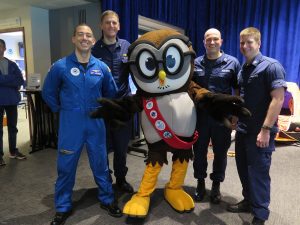Wettest Year on Record for Many Cities in the Eastern U.S.
For much of 2018, satellite images have shown the Eastern U.S. covered in a thick blanket of clouds – and for good reason: Time and again, major storms have soaked the Mid-Atlantic and parts of the South with abundant rainfall. As the year draws to a close, the National Weather Service reports more than a dozen major cities have now had their wettest calendar year on record, including Washington, D.C., Baltimore, Md., and Wilmington, N.C.
On the morning of December 15, NOAA’s GOES East satellite captured this image of the recent weekend storm that drenched the Mid-Atlantic. Nearly 3.5 inches of rain fell in Washington, D.C., more than enough to set a new milestone for the city’s wettest year on record. By the time the deluge had ended, Washington’s 2018 precipitation total had climbed to 64.22 inches, blowing the previous calendar year record (61.33 inches, set in 1889) out of the water. In a typical year, the nation’s capital receives about 40 inches of precipitation.
In Wilmington, North Carolina, this year’s rainfall has surpassed 100 inches, an amount more than 3 feet above normal. The flooding rains that fell during Hurricane Florence in September helped contribute to Wilmington’s triple-digit total.
Many locations that have set precipitation records will likely add to their totals before 2018 ends. NOAA’s Climate Prediction Center is forecasting above-normal precipitation in the Central and Eastern U.S. through the end of the year. With an El Niño still likely to form in the tropical Pacific Ocean, a wetter-than-normal winter may be in store for the Mid-Atlantic and Southeast U.S.
Credit: NOAA Environmental Visualization Laboratory


